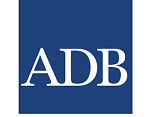The Global Environment Facility (GEF) is a partnership for international cooperation in which over 180 countries work together with international institutions, civil society organizations, and the private sector to address global environmental issues.
The GEF is the financial mechanism for five international conventions: the United Nations Framework Convention on Climate Change (UNFCCC), the United Nations Convention on Biological Diversity (UNCBD), the Stockholm Convention on Persistent Organic Pollutants (POPs), the United Nations Convention to Combat Desertification (UNCCD), and the Minamata Convention on Mercury. Main focus areas are:
- Biodiversity;
- Climate Change (mitigation and adaptation);
- Chemicals and Waste;
- International Waters;
- Land Degradation; and
- Forests.
Grant Programs for Agriculture, Energy, Environment, Natural Resources
The grant-making programs in GEF are many and complex. GEF provides grants to various types of projects ranging from several thousand dollars to several million dollars.
- Full-sized Projects (FSPs) — For grants over US$2 million, GEF’s implementing agencies work with an operational focal point in each country to develop project ideas consistent with the country’s priorities, and with GEF’s operational strategy and programs. Full-sized projects have to be approved by GEF’s Council.
- Medium-sized Projects (MSPs) — Grants of less than US$2 million are available through expedited procedures that speed processing and implementation. They are intended to encourage a wide variety of interested parties to develop and propose project concepts.
- Enabling Activities (EAs) –Grants of less than US$1 million for capacity-building activities under the conventions. The GEF provides grants for developing plans, strategies, programs, and reports in support of the relevant conventions.
- Programmatic Approaches (PAs) — This framework connects GEF with the private sector, aid donors, and the scientific community in programs that integrate global environmental objectives into national and regional strategies. A program usually contains several projects to foster increased horizontal and vertical integration.
APPLICATION: Any individual or group in a GEF member country may propose a project. Project concepts can be developed by governments, NGOs, communities, the private sector, and other civil society entities. The project must reflect national or regional priorities, and it must have the support of the country or countries in which the project will be implemented.
GEF’s operational focal points administer the in-country coordination of GEF’s projects. Grant seekers begin by contacting the country’s operational focal point to verify that project ideas will be eligible for GEF’s consideration. They subsequently prepare a Project Identification Form in close coordination with one of GEF’s partner agencies.
Many projects begin with a project preparation grant. Project ideas that meet initial criteria are submitted for further processing, depending on the type of grant requested. Larger projects are reviewed by GEF’s Scientific and Technical Advisory Panel and, when appropriate, the secretariats of the relevant conventions.
Geographical Distribution of Grant Activities in Developing Countries
GEF’s member developing countries are identified below in the regional geographical structure of the Terra Viva Grants Directory.
Southeast Asia and Pacific Islands: Cambodia, Fiji, Indonesia, Kiribati, Laos, Malaysia, Marshall Islands, Micronesia, Myanmar, Nauru, Palau, Papua New Guinea, Philippines, Samoa, Solomon Islands, Thailand, Timor-Leste, Tonga, Tuvalu, Vanuatu, Vietnam
East Asia: China, Mongolia, North Korea
South Asia: Bangladesh, Bhutan, India, Maldives, Nepal, Pakistan, Sri Lanka
Eurasia and Central Asia: Afghanistan, Armenia, Azerbaijan, Georgia, Iran, Kazakhstan, Kyrgyzstan, Tajikistan, Turkey, Turkmenistan, Uzbekistan
Eastern Europe and Russia: Albania, Belarus, Bosnia and Herzegovina, Croatia, Kosovo, Macedonia, Moldova, Montenegro, Russia, Serbia, Ukraine
Middle East and North Africa: Algeria, Egypt, Jordan, Lebanon, Libya, Morocco, Syria, Tunisia, Yemen
Sub-Saharan Africa: Benin, Botswana, Burkina Faso, Burundi, Cameroon, Cape Verde, Central African Republic, Chad, Comoros, Congo, Cote d’Ivoire, Dem Rep of Congo, Djbouti, Equatorial Guinea, Eritrea, Ethiopia, Gabon, Gambia, Ghana, Guinea, Guinea-Bissau, Kenya, Lesotho, Liberia, Madagascar, Malawi, Mali, Mauritania, Mauritius, Mozambique, Namibia, Niger, Nigeria, Rwanda, Sao Tome and Principe, Senegal, Seychelles, Sierra Leone, Somalia, South Africa, South Sudan, Sudan, Swaziland, Tanzania, Togo, Uganda, Zambia, Zimbabwe
Latin America and Caribbean: Antigua and Barbuda, Argentina, Bahamas, Barbados, Belize, Bolivia, Brazil, Chile, Colombia, Costa Rica, Cuba, Dominica, Dominican Republic, Ecuador, El Salvador, Grenada, Guatemala, Guyana, Haiti, Honduras, Jamaica, Mexico, Nicaragua, Panama, Paraguay, Peru, Saint Kitts and Nevis, Saint Lucia, Saint Vincent and Grenadines, Suriname, Trinidad and Tobago, Uruguay, Venezuela
Projects and programs are designed and carried out in partnership with several international agencies for project implementation. The GEF is in process of accrediting additional project agencies.
GEF’s database of projects can be searched by country, focal area, operational program, dates of project approval, and project size.
The GEF works through operational focal points in each country.
Note: The Terra Viva Grants Directory offers a separate profile of the French program of the GEF, which adheres to the same GEF program areas, but is managed by French institutions.
February 2021

